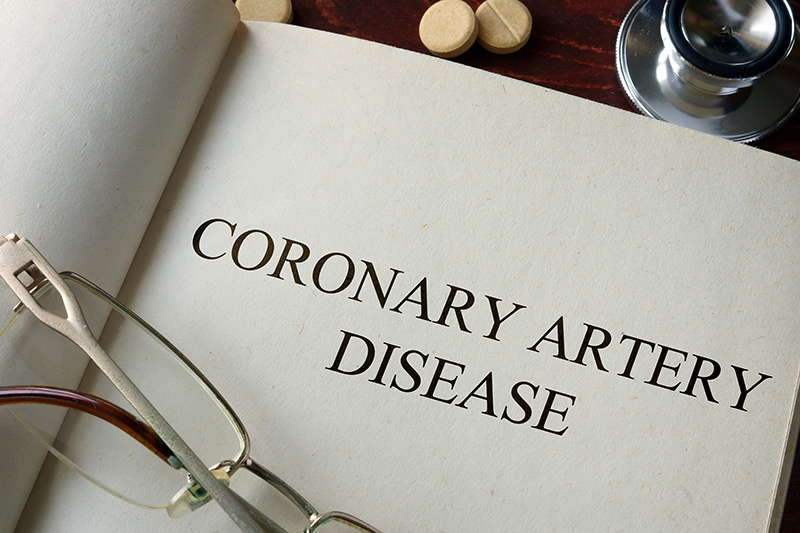Regarded as one of the leading causes of death among both men and women in the United States, Coronary Artery disease (CAD) causes impaired blood flow in the arteries. Also called coronary heart disease (CHD)/ischemic heart disease, it causes a narrowing or blockage of the coronary arteries, caused by the buildup of fatty material or plaque. Cholesterol-containing deposits (plaque) in the coronary arteries and inflammation are usually to blame for coronary artery disease. For correct clinical documentation of this disorder, cardiologists may depend on the services of reliable medical billing outsourcing companies.
Coronary Artery Disease is one of the most common forms of heart disease and affects approximately 16.5 million Americans (2020 statistics) over the age of 20. It is estimated that every 40 seconds, someone in the United States has a heart attack. A heart attack can occur from uncontrolled CAD. The condition tends to occur with damage or injury to the inner layer of a coronary artery, sometimes as early as childhood. The damage may be caused by several factors like high blood pressure, high cholesterol, diabetes or insulin resistance, smoking, and sedentary lifestyle habits. In fact, approximately 2 percent of people with angina, or chest pain and pressure, experience coronary artery spasms. Once the inner wall of an artery gets damaged, fatty deposits (plaque) tend to collect at the site of injury.
Signs and Symptoms
Most cases of CAD go undiagnosed as they don’t always cause noticeable symptoms. This can be serious as the contractions may eventually cause a heart attack. Angina (chest discomfort) is the most common symptom of CAD. Some people describe this discomfort as – chest pain, heaviness, tightness, burning and squeezing. The discomfort can also spread to or only be felt in the left shoulder, arms, neck, back or jaw. Other related symptoms include – feeling of tiredness, dizziness, lightheadedness, shortness of breath, nausea and weakness. However, women are somewhat more likely than men to have less typical signs and symptoms. Symptoms of heart attack in women can be slightly different and include – discomfort or pain in the shoulders, neck, abdomen (belly) and/or back, feeling of indigestion or heartburn, unexplained anxiety and cold sweat. Several factors like – age, high blood pressure/cholesterol levels, stress, diabetes, obesity, physical inactivity and smoking can increase the risk of this condition.
Diagnosing, Treating and Coding CAD
Diagnosis of coronary artery disease (CAD) requires a detailed review of medical history, physical examination and other medical testing. Imaging tests like – Electrocardiogram, Echocardiogram, Cardiac catheterization (left heart catheterization) and angiogram, Cardiac CT scan, Coronary angiography and Exercise stress test may be performed to provide a clear picture of the heart and help physicians devise a specific treatment plan. In addition, blood tests may be performed to identify factors that affect arteries. Treatment modalities depend on the current health condition, risk factors, and overall wellbeing of the patient. In most cases, a combination of treatment modalities such as medications (to reduce cholesterol, blood pressure, risk of blood clots and diabetes levels) and lifestyle changes like – quitting smoking/alcohol use, increasing activity levels and eating a heart healthy diet) can help prevent the risk of heart disease in the long run. If the condition doesn’t improve with lifestyle changes and medications, cardiologists may recommend certain procedures like – balloon angioplasty, coronary artery bypass graft surgery or enhanced external counter pulsation to increase blood flow to the heart.
Cardiology medical billing and coding involves using the relevant codes on the medical claims submitted to health insurers. A professional cardiology medical coding company provides the services of experienced medical coders who are up to date with the changing coding regulations and guidelines for the cardiology specialty. Related ICD-10 codes include –
- I25 – Chronic ischemic heart disease
- I25.1 – Atherosclerotic heart disease of native coronary artery
- I25.10 – Atherosclerotic heart disease of native coronary artery, without angina pectoris
- I25.11 – Atherosclerotic heart disease of native coronary artery with angina pectoris
- I25.110 – Atherosclerotic heart disease of native coronary artery with unstable angina pectoris
- I25.111 – Atherosclerotic heart disease of native coronary artery with unstable angina pectoris, with documented spasm
- I25.118 – Atherosclerotic heart disease of native coronary artery with other forms of angina pectoris
- I25.119 – Atherosclerotic heart disease of native coronary artery with unspecified angina pectoris
A healthy lifestyle can help keep the arteries strong and clear of plaque. Patients need to follow certain tips like – quitting smoking, controlling conditions such as high blood pressure, high cholesterol and diabetes, staying physically active, reducing stress and maintaining a healthy body weight.
Cardiology medical billing and coding can be quite challenging for cardiologists and their office team. Outsourced medical billing and coding services is a practical option for such physicians to ensure accurate clinical documentation for this heart disorder.




